A Discussion With Lana Pollack, U.S. Chair of the International Joint Commission
The Laurentian Great Lakes are the largest body of fresh surface water in the world. In 1909, the United States and Canada formed the International Joint Commission to manage this vast resource and all of the other waters shared between the two nations. Circle of Blue’s Kaye LaFond caught up with Lana Pollack, U.S. Chair of the IJC, in Chicago last month to discuss some of the most pressing issues in the Great Lakes region.
Lana Pollack: What kind of an algal bloom season is it going to be? We’ll know more in the next several weeks as we see the rainfall, how that comes this year or not. But the algal blooms are an enormous problem, because they’re immediate and present. Some challenges are more insidious. They’re slow, you don’t see them. They’re beneath the surface, so to speak. The algal blooms, we saw what they could do in the worst case scenario in Toledo and [that] region last year. I mean, when a threat has the very real chance of eliminating drinking water for hundreds of thousands or even millions of people, or even small communities, you have to pay attention to that.I think that on the algal bloom issue, we have lots more work to do. The different elements of government have more to do, but Ohio did take a major step. Insufficient, but definitely good and in the right direction in banning the spreading of fertilizers — both natural and chemical — on frozen ground, which should have been a no-brainer. But it was very much a part of the IJC’s recommendations in the LEEP [Lake Erie Ecosystem Priority] report. But there’s much more to do on that.
Yet another issue that is in court — and not in a court within a Great Lakes federal district — is the Des Moines [Iowa] challenge. The question is, as they assert, I believe: ‘Does the Clean Drinking Water Act cover the pollution that comes from farm fields, if those farm fields are drained through a tile drainage system?’ Because, of course, traditionally we have always assumed, and the law has been applied in such a way, that farm applications or farm-runoff pollution is not covered, and so therefore pollution that comes from a farm can’t be regulated, and the public can’t be protected, in the same way as pollution that would come from a factory or some other facility.
“When a threat has the very real chance of eliminating drinking water for hundreds of thousands or even millions of people, or even small communities, you have to pay attention to that.”
–Lana Pollack, U.S. chair
International Joint Commission
It’s a rather, I’d say, innovative, interesting, and yet-to-be-determined argument. If you gather the water together in a very systematic way and put it out through tile pipes, is it then still non-point or is it point [source pollution]? So, I think that the outcome of that could have a very profound impact on the [Great Lakes]. If the finding is that they’re not a point source, then that’s not going to have an impact on the lakes, but if the finding were to be that [they are], that could make a big difference. Because, the research that was gathered and analyzed and presented in the IJC’s LEEP report on Lake Erie clearly shows that there’s substantial evidence that, while there are several contributors to phosphates which are the contributors to the algal blooms, by far and away the biggest contributor is what’s coming off the farms.
Lana Pollack: Invasive species you can mark down in the success and the utter failure category. I mean, we were so late in getting the political will to respond to the ballast water vector, which was well-known and well-articulated by IJC years ago. This is going to happen, this is going to happen, this is going to happen — oh gee, it did happen! And the threats, of course, now have spread to Lake Winnipeg and beyond. While we have some measures in place, I still believe we need stronger measures, and there is some good news on that front. There’s some new technology that has been approved. It’s an on-board treatment technology that is brand new. Just very recently it has been approved, and that’s great.I continue to worry very much about the low-risk, high-consequence threats of pipelines and other transport of hydrocarbons. And an issue that the IJC has not taken up, but still has unknowns — and by that I mean really unknowns — is the proposed deep repositories for nuclear waste on the shores [of Lake Huron]. That’s a new consideration that requires a lot of thought. There have been Canadian studies of that, there have been some American studies. It’s not anything the IJC has dealt with or has decided to deal with yet.
Lana Pollack: Well, that doesn’t fall to us, at least at this point, because it’s not profound enough to really trigger the treaty. But, I will say this, which is I think everybody who is informed and concerned about the lakes looks at the very early implementation of the Compact. That could be an indication — are people taking this seriously? Are the governments taking this seriously?
“I continue to worry very much about the low-risk, high-consequence threats of pipelines and other transport of hydrocarbons.”
–Lana Pollack, U.S. chair
International Joint Commission
So without trying to be a stand-in for Governor [Rick] Snyder or any other governor, there is a lot of responsibility to get it right early on. That’s always the case with anything. So if you have a new law — let’s say that it is a law to protect waters in regard to mining waste or farm waste — the first implementation of it, the first permits that are given, will tell you whether it’s being taken seriously or not.
Lana Pollack: The most exciting possibility for us to do something truly fabulous is what we call Plan 2014. It’s part of the Great Lakes-St. Lawrence River system that we in Michigan are unfortunately prone to forget about. On Lake Ontario and in the Upper St. Lawrence River, below Niagara Falls, they have a system of engineered water-level control that has not gone well for nature. In the 1950s, when the St. Lawrence River [navigation system] was being built and the IJC was asked to approve and issue an order for the dam that was being built at Cornwall, Ontario, and Messina New York — the Moses Saunders Dam — we were also asked at that time by the governments to try to artificially compress what would be the natural variability of the hydro-system, the water levels in the lake, and to try to keep that at a 4-foot [1.2 meter] span.Well we’ve tried, with the order that’s been employed since that time. We’ve not succeeded entirely because nature, again, will have its way. But we have artificially compressed the water-level variability enough there to essentially destroy the health of 64,000 acres [259 square kilometers] of wetlands. And the proposal to restore that through quite simply changing the way the dam is operated when you open and lower the gates, which is virtually free of charge, that would be the second largest wetlands restoration project in the history of North America, with the Everglades efforts being larger than that. The Everglades are complex and horrifically expensive, and they’re trying to re-plumb the Everglades. All we’re trying to do is get approval to change the way we operate the gates. Now that plan rests, again, with the federal governments. So it’s the IJC plan, but the treaty requires their concurrence with our proposal.
The negative pressure on that plan is coming, first of all and most importantly, from the navigation industry. Although the plan does protect the navigation interests economically — the interests of navigation would be at least equal to what they are today — navigation wants more. Every interest wants it all. You know, hydropower can ask for more hydro, and the riparians could ask for even more, and the fishermen and the birders — everybody would love to have it the way they want it. The IJC looks at the treaty and says, “What does the treaty require us to do?” Within the parameters of the treaty, we think we’ve put forward an excellent plan that has a good shot of changing the 64,000 acres [259 square kilometers] of wetlands back into a natural ecosystem that would support the really fabulous plant and animal life that was once there, instead of the monoculture cattails that are nasty and have taken over because of what we are doing. So, the biggest success could come in very practical, immediate ways on Lake Ontario and the St. Lawrence River.
is both a scientist and a journalist, she holds an MS in Environmental Engineering from Michigan Technological University, and she brings proficiency in ESRI’s ArcGIS mapping software.


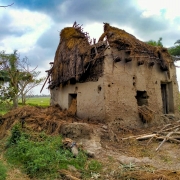
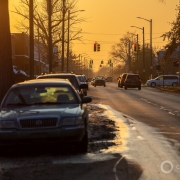
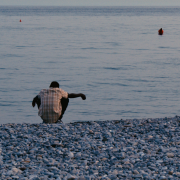
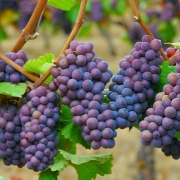
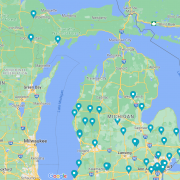
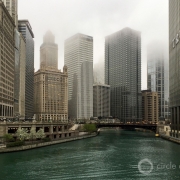



For whatever good Lana has done, she has never once returned an email to me or reached out to better understand my work. Ice boom Theory explains in detail how stopping the ice on Lake Erie is killing the entore Lower Great Lakes ecosystem. Here is a recent interview I gave. http://buffalorising.com/2015/04/interview-with-joseph-barrett-and-ice-boom-theory/ for those that like to know more. I just find it hard to believe Lana real cares at all. she seems to work for the New York Power Authority. If you know her, ask her. I’d like to know too. JBB
Thank you for this very informative interview on current Great Lakes issues. I can confirm that the IJC is well informed by the work of hundreds of scientists in Canada (my country) and the US. I have just one correction to offer to Kaye Lafond – the 1909 Boundary Waters Treaty covers all shared waters along the 8,800 km Canada-US border, including about 350 rivers and streams that cross that border.